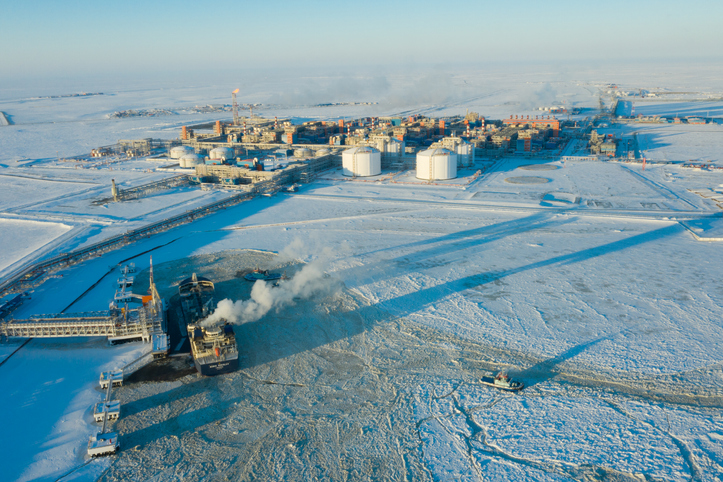Factories in Europe remain largely powered by gas, while China is rapidly switching to electricity.
According to Antonio Lopez-Nicolas, chief economist at the European Commission, Directorate for Energy, electrification is a major trend in the industrial world.
Electricity is seen as more efficient and sustainable, and does not rely on gas imports, “but this trend is not happening in Europe”, he said.
On electric vehicles (EVs), China has been ahead for years. The IEA says in 2025, after years of being the largest producer and cheaper than elsewhere, “China continues to be the world’s EV manufacturing hub and is responsible for more than 70 per cent of global production”.
For its industries, European countries still import growing amounts of gas from different regions and liquified natural gas (LNG) from Russia and the US, despite sanctions, bans and geostrategic worries.
Lopez-Nicolas expressed hope that Europe “will move from 23 per cent electrification currently to 32 per cent in 2030, 46 per cent in 2040, and 57 per cent in 2050”.
“So this is also the ‘age of electricity,’ as the International Energy Agency calls it.
“But it is not happening yet in Europe … Here, electricity has stagnated at 23 per cent for the last six years.
“So there needs to be growth of electrification of the economy, of heating and cooling, and of transport,” he says.
According to the European Commission’s energy consumption tracker, the main source of energy for industries on the continent until the 2000s was natural gas.
Then electricity took over by a very slight margin but has now stopped increasing and still accounts for about 20 per cent of the total consumption each.
In recent years, renewables consumption started to match coal and petroleum products, both accounting for a little over a tenth of energy consumed.

In China, coal consumption in the industry sector peaked in 2014 and has since declined by 25 per cent, according to the IEA .
William D’Haeseleer, former professor at KU Leuven and director of its interdisciplinary Energy Institute said: “If by 2050 we have not managed to kick off these technologies and scale them up in factories, the 2040 and 2050 targets will be unreachable.”
He added that industrial uptake is often slowed by infrastructure bottlenecks: “Companies tend to wait for supportive grids and investments before converting to electric processes, while infrastructure providers wait for demand to justify spending. This timing problem delays both sides.”
Meanwhile, China is moving quickly. The latest report from the Climate Energy Finance think-tank calls China the world’s first “electrostate,” where industrial electrification is central to economic strategy.
The country adds an average of 460GW of wind and solar photovoltaics (PV) per year, invests heavily in nuclear and battery storage, and is building a grid designed to handle industrial-scale electricity demand.
By 2035, low-emissions sources in China are projected to supply more electricity than oil and natural gas combined.
The IEA notes that China’s energy-intensive industries are increasingly powered by electricity rather than fossil fuels and overall electricity already accounts for 27 per cent of final energy consumption — rising to 35 per cent by 2035.
Residential, industrial and service-sector electricity use has grown faster than GDP since the Covid pandemic, “showing how integral electrification is to China’s economic growth”, it said.
The shift has already been visible in transport: Not only selling the largest amount of EVs, nearly half of new car sales in China were electric in 2024. EVs are expected to represent over 80 per cent of new sales by 2030.
High-speed rail and electric public transport further reduce oil demand, allowing fossil fuel imports to decline even as the economy continues to expand.
For European factories, Lopez-Nicolas highlights a mix of technical, financial and policy hurdles: Grid upgrades, cross-border connections and “renewable deployment [is] progressing”, but “unevenly across member states”.
European industries have been struggling to keep competitive prices due to energy prices being higher in Europe than elsewhere, but recent measures to reduce gas price will not work long term, D’Haeseleer said.
“Short-term measures like temporarily lower gas prices can help companies operate more efficiently, but they do not address the structural lag in electrification of factories”, as temporary fixes ease pressure on companies but don’t solve the long-term problem of switching European factories from gas and coal to electricity.
The gap has implications beyond energy. As the think-tank highlights, China’s electrified industry is gaining a competitive edge in sectors such as chemicals, petrochemicals and non-ferrous metals.
European manufacturers risk losing ground if electricity continues to replace fossil fuels more rapidly abroad than at home, it said.





